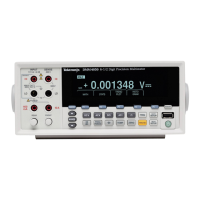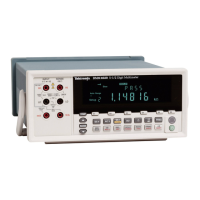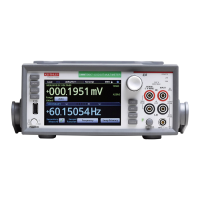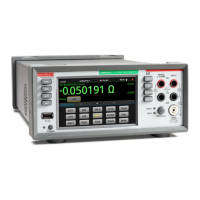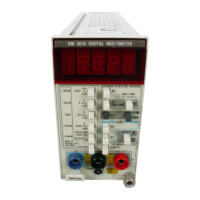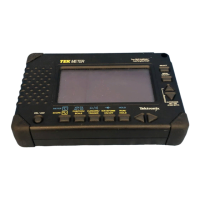TAS 200 Series Performance Verification
12
Handheld and Benchtop Instruments Basic Service
NOTE. At lower VOLTS/DIV settings, you might need to set TRIGGER COU-
PLING to HF REJ to minimize noise or double triggering.
Table 14: DC Coupled Bandwidth
Volts/Div 50 kHz
Reference Amplitude
Bandwidth
Minimum Amplitude
TAS 220
Bandwidth
TAS 250
Bandwidth
1 mV 6 divisions 4.2 divisions 10 MHz 15 MHz
2 mV 6 divisions 4.2 divisions 10 MHz 15 MHz
5 mV 6 divisions 4.2 divisions 20 MHz 50 MHz
10 mV 6 divisions 4.2 divisions 20 MHz 50 MHz
20 mV 6 divisions 4.2 divisions 20 MHz 50 MHz
50 mV 6 divisions 4.2 divisions 20 MHz 50 MHz
100 mV 6 divisions 4.2 divisions 20 MHz 50 MHz
200 mV 6 divisions 4.2 divisions 20 MHz 50 MHz
500 mV 6 divisions 4.2 divisions 20 MHz 50 MHz
1 V 4 divisions 2.8 divisions 20 MHz 50 MHz
4. Repeat steps 1 through 3 for CH 2.
To check DC balance accuracy, perform the following steps.
1. Set up the oscilloscope as follows:
VERTICAL MODE CH1 (CH2)
CH 1 (CH 2) GND In
CH 1 (CH 2) VARIABLE CAL
2. Verify that the oscilloscope trace shift is less than ±0.5 divisions when
rotating the CH 1 (CH 2) VOLTS/DIV control between the 5 mV and 5 V
settings.
3. Verify that the oscilloscope trace shift is less than two divisions when the
CH 1 (CH 2) VOLTS/DIV control is changed from the 1 mV to the 2 mV
setting.
4. Repeat steps 1 through 3 above for CH 2.
DC Balance

